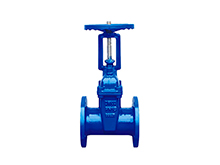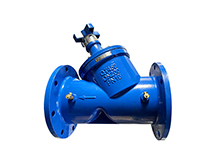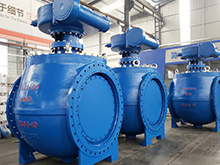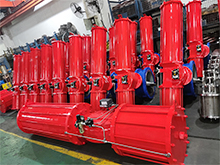- Gate valve
-
- BS5163 rising stem soft seal gate valveDN1000 Extension stem double flange soft seal gate valveWEIZIDOMDIN F4 resilient seated gate valveDN450-1200 Resilient Seated Gate ValveDIN F5 resilient seated gate valveSocket connection soft seal gate valveWEIZIDOMUnderground cap soft seal gate valveHard seal gate valveAPI slab Gate ValveStainless steel flange gate valveWafer knife gate valvePneumatic gate valveSoft seal gate valveExtension stem gate valveUL/FM fire protection groove ends gate valveRising stem forged steel gate valvecarbon steel gate valveStainless steel threaded gate valveDIN soft seal gate valveANSI soft sealing gate valve 200PSICast iron gate valveBS resilient seated gate valve
- Butterfly valve
-
- DN900 pneumatic triple eccentric hard seal butterfly valveD643H Triple Eccentric Butterfly ValveD343H Hard seal butterfly valveMulti standard EPDM seated butterfly valveSingle flange butterfly valveDN2000 Double eccentric butterfly valveFlange butterfly valveLug butterfly valveWafer butterfly valve with handleWorm gear operated butterfly valveWafer lined fluorine butterfly valveStainless steel wafer butterfly valveStainless steel flanged butterfly valveThree eccentric flange butterfly valvePneumatic flanged butterfly valvePneumatic wafer butterfly valveTriple eccentric butterfly valve wafer typeWafer butterfly valve ULC approvedInflatable seat butterfly valveHigh performance butterfly valveGrooved end butterfly valveElectric soft seal butterfly valveFlange fluorine lined butterfly valveHandle aluminum butterfly valveWorm Gear Aluminum Butterfly ValveFull PTFE lined butterfly valve wafer typeOne stem no-pin wafer butterfly valveMulti standard aluminum stem butterfly valveStainless Steel wafer Butterfly ValveAluminium handle operated lug butterfly valveLever Operated Flange Butterfly ValveButterfly valve stemButterfly valve discButterfly valve seat
- Ball valve
-
- DN1400 top-mounted eccentric semi-ball valveFlanged three-way ball valveFully welded ball valveNatural gas ball valveHigh platform flange ball valve1 PC ball valveFixed ball valvePTFE seat flanged ball valveMetal seat ball valveAPI 6D ball valve3 Piece ball valveFull Bore 3 way ball valve L-Port3 Way T-Port ball valve2PC Ball valve female thread stainless steel
- Globe Valve
-
- API Carbon Steel Globe ValveBellows Globe ValveStainless steel flange globe valveStainless steel thread S type globe valveStainless steel thread B type globe valveCast Steel Globe ValvePiston Globe ValveWCB Carbon Steel Globe Check Valveelectric motorized control stainless steel SS316 globe valveBrass Globe ValveCryogenic Globe valveHT200 Globe ValveThreaded Stainless Steel Globe ValveGG25 Globe ValveANSI API Cast Steel And Stainless Steel Globe valve
- Check valve
-
- Rubber seal check valveDN800 Slow closing check valveDN800 Rubber Disc Check ValveButterfly Buffering Check Valvecheck valve with counter weightSilent Check ValveWCB Swing check valveSwing Check ValveSingle Chip Check Valve H74WStainless Steel Wafer Check ValveSwing Start Check ValveFoot check valveAPI Swing Check ValveDIN Flange check valveSingle plate check valveLifting Check ValveBottom ValveHammer Diminish Noises Check ValveWafer Check ValveWafer dual plate check valve
- Control valve
-
- Static Balancing ValveCage Guided Sleeve Globe Control ValveDN1000 Piston Flow Regulating ValveDN1600 Electric Actuator Flow Regulating ValvePneumatic Flanged Butterfly ValvePneumatic Wafer Butterfly ValveAngle Seat ValvePneumatic gate valveElectric three-way control valveElectric sleeve control valve
- Water Meter
-
- Vertical Type Water MetersStainless steel threaded water meterPiston water meterPlastic water meterMore flow rotor dry water meterspiral vane flange water meterCI wotlman water meter with pulse outputLXCLG(R) Vertical removable element woltman cold (hot) water meterSingle flow rotor dry water meterPrepaid Token Water MeterElectromagnetic flowmeterRotary Piston Liquid Sealed Water MeterRotary Piston Liquid Sealed Water Meter
- Air valve
-
- Double ball exhaust valveDoubleair Air Valve SaudiDoubleair Air Valve Southeast AsiaDoubleair Air Valve South AmericaDouble Air ValveThreaded Air ValveSingle Air ValveTriple Functions Air ValveAutomatic Air Release ValveAutomatic release valveAutomatic exhaust valveComposite Exhaust Air ValveBrass exhaust valveDouble Ball Air Valve
- Pipe Repair & Coupling
-
- Flexible Multi-Function Pipe Coupling ZFJ-SSS Semi-Circle Pipe Repair Clamp SJW-HDuctile Iron Band Repair ClampStainless Steel Band Repair ClampDouble-Section Pipe Repair CouplingFolding Type Pipe RepairSingle-Section Multi-Function Pipe Coupling MF-SGear-Ring Type Multi-Function Pipe Coupling GR-SZBW Damping Corrugated Hose
- Dismantling Joint
-
- VSSJAFC(CC2F) Detachable Flange Transmission JointVSSJA-2(B2F) Double Flange Limited Expansion JointVSSJA-1(BF) Single Flange Limited Expansion JointVSSJA(AF) Flange Loose Expansion JointJGD-B Threaded Rubber JointZBW Damping Corrugated HoseKXT-S Flexible Dual-Spherical Rubber JointKXT Rubber Soft JointFlange Adaptor
Hydrostatic Failures in Piping Systems: Causes, Prevention, and How to Avoid Costly Leaks
Why Hydrostatic Testing Matters?
In every industrial piping system, safety and reliability are top priorities. Before a pipeline begins service, engineers must ensure that every weld, joint, and material section can withstand operational pressure. This is why hydrostatic testing—the process of pressurizing a system with water to check for leaks or structural weaknesses—is a standard step in pipeline commissioning.
However, despite careful preparation, hydrostatic failures can still occur. Leaks, cracks, and ruptures during or after testing can cause costly downtime, safety risks, and even environmental damage. Understanding the causes, consequences, and prevention of these failures is essential to ensuring pipeline integrity and long-term performance.
1️⃣What Are Hydrostatic Failures in Piping Systems?
A hydrostatic failure occurs when a pipeline, valve, or joint cannot withstand the pressure applied during a hydrostatic test. These failures may appear as leakage, deformation, or catastrophic rupture.
Such incidents typically indicate flaws in design, material, fabrication, or testing procedures.
Hydrostatic testing is required in most international standards such as ASME B31.3, API 570, and ISO 5208. The test ensures the pipeline is structurally sound and ready for operation under real-world conditions.
2️⃣Common Causes of Hydrostatic Failures
Hydrostatic failures can result from multiple interacting factors. Below are the most frequent causes encountered in field applications:
✅ Material Flaws
Even certified materials can contain inclusions, laminations, or micro-cracks from manufacturing. Under pressure, these imperfections can propagate and cause leakage or rupture.
✅ Porosity in Welds
During welding, improper shielding gas or cooling rates can create porosity—tiny voids that reduce structural integrity and increase leak risk.
✅ Fatigue Cracks
Pipelines under repeated pressure cycles can develop fatigue cracks, especially at stress points such as elbows, welds, or valve connections.
✅ Welding Defects
Common welding issues—such as incomplete fusion, undercut, slag inclusion, or poor filler metal quality—can severely compromise weld strength.
✅ Corrosion Damage
When water, oxygen, or aggressive chemicals remain inside the pipeline after testing, corrosion can weaken the metal and lead to failure later on.
✅ Joint or Connection Failures
Threaded, coupled, or flanged joints may fail if misaligned, overtightened, or subjected to excessive stress during pressure buildup.
✅ Pressure Mismanagement
Sudden increases in test pressure or exceeding the maximum allowable limit can cause immediate rupture or stress fatigue.
✅ Inadequate Venting and Draining
Trapped air pockets create uneven pressure zones, leading to inaccurate test results and potential water hammer effects.
✅ External and Environmental Factors
Ground movement, temperature fluctuations, or external impact can also contribute to sudden leaks or deformation during hydrotesting.
3️⃣Consequences of Hydrostatic Failures
Hydrostatic failures can cause significant safety, financial, and operational consequences:
✅ Leakage
The most common issue, leaks can lead to water loss, damage to surrounding structures, and environmental contamination.
✅ Ruptures and Bursts
A full rupture poses serious risks to workers and equipment. In extreme cases, it can cause injuries, fatalities, and major downtime.
✅ Pipeline Downtime
After a failure, operators must repair or replace damaged sections and repeat testing—delaying project delivery and increasing costs.
✅ Financial Losses
Expenses include replacement materials, additional testing, manpower, and potential regulatory fines for non-compliance.
✅ Safety Hazards
Uncontrolled water release during a test can create dangerous working conditions, emphasizing the need for trained personnel and safety barriers.
✅ Regulatory Non-Compliance
Pipelines that fail hydrostatic testing may be deemed unsafe under API or ASME standards, preventing commissioning and delaying operations.
4️⃣How to Prevent Hydrostatic Failures
✅ Quality Control and Material Inspection
Use certified materials, conduct ultrasonic or radiographic testing (UT/RT) for welds, and ensure that all materials meet required pressure ratings.
✅ Proper Pressure Testing Procedures
Increase and decrease pressure gradually
Follow standard test durations
Use calibrated gauges and monitor for pressure drops
Avoid shock loading and ensure temperature and test medium conditions meet specification.
✅ Regular Maintenance and Inspection
Routine pipeline inspections, corrosion monitoring, and valve checks can identify early warning signs before hydrotesting occurs.
✅ Drying and Cleaning After Testing
Residual water can accelerate corrosion, especially in carbon steel systems. Always ensure complete drainage and drying before final commissioning.
✅ Operator Training and Safety Awareness
Personnel conducting hydrostatic testing must be familiar with:
Test pressure calculations
Emergency procedures
PPE usage and confined space protocols
✅ Use of Alternative Testing Methods
In systems where hydrotesting is risky, pneumatic or ultrasonic testing may be more appropriate to verify structural integrity.
5️⃣Best Practices for Safe Hydrostatic Testing
✅ Pre-check welds and joints for visual defects
✅ Ensure all valves are open during filling
✅ Eliminate trapped air before pressure buildup
✅ Conduct slow pressure ramp-up (≤10% increments)
✅ Record pressure-hold periods accurately
✅ Drain and dry immediately after test completion
�� Tip: Always use calibrated test instruments and maintain detailed records for regulatory audits and warranty claims.
6️⃣Real-World Example: Solving Hydrostatic Failures with Proper Valving
In 2024, WEIZIDOM assisted a water treatment project in Iraq that experienced repeated hydrostatic test failures due to improper flange sealing and low-quality valves.
After replacing with WEIZIDOM stainless steel ball valves and properly sequencing pressure increases, the pipeline passed the test successfully—proving the importance of high-quality components and proper test management.
7️⃣Reliability Starts with Quality
Hydrostatic failures can be costly, dangerous, and time-consuming—but they are largely preventable with the right materials, procedures, and maintenance.
By ensuring proper inspection, pressure control, and professional testing, you can protect your system and extend its operational life.
At WEIZIDOM, we provide:
High-quality valves, fittings, and flow control products
Engineering support for hydrostatic and pneumatic testing
Customized pipeline solutions for water, HVAC, and industrial systems
Contact us: eileen@wsdsolution.com
Website: www.wsdvalves.com
SEO Keywords:
hydrostatic failures, pipeline testing, hydrotest failure, water pressure test, valve testing, pipeline leak, weld defect, corrosion failure, WEIZIDOM valve manufacturer, hydrostatic testing safety
Pre : Which Is Better: Gate Valve or Ball Valve?
Next : Back To List









